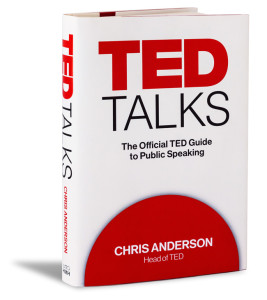To Blog, Slash Back the Range of Topics
 “To provide an effective talk, you must slash back the range of topics you will cover to a single, connected thread,” cautions Chris Anderson, head of TED Talks. Done right, he says, carefully crafted short talks can be the key to unlocking empathy and sharing knowledge.
“To provide an effective talk, you must slash back the range of topics you will cover to a single, connected thread,” cautions Chris Anderson, head of TED Talks. Done right, he says, carefully crafted short talks can be the key to unlocking empathy and sharing knowledge.
Much of the wisdom Anderson shares can serve as a guide for effective blog content writing, I found. Here are a few of the gems I found in this wonderful book:
“The goal is for you to give the talk that only you can give.”
Whether it’s business-to-business blog writing or business to consumer blog writing, the blog content itself needs to be unique to you, showing clearly what differentiates your business, your professional practice, or your organization from its peers. The goal to “birth” the content that expresses your personal brand.
“You will cover only as much ground as you can dive into in sufficient depth to be compelling.”
Blog posts have a distinct advantage over the more static website copy. Each post can have a razor-sharp focus on just one story, one idea, one aspect of your business or practice. Other important things to discuss? Save those for later posts!
“Different talks can have very different structures. One might introduce the problem the speaker is tackling. Another might be simply sharing pieces of work that have a connected theme.”
While our first instinct in writing a blog post might be to follow a linear structure, that’s not the most effective way to present ideas in every situation. Different blog posts can compare and contrast, show cause and effect, compare advantages and disadvantages of a product or a particular approach, use testimonials, and develop story lines.
“People aren’t computers. They’re social creatures who have developed weapons to keep their worldview protected from dangerous knowledge…To make an impact, there has to be a human connection.”
One interesting perspective on the work we do as professional bloggers is that we translate clients’ corporate message into human, people-to-people terms. People tend to buy when they see themselves in the picture and relate emotionally to the person bringing them the message.
To blog impactfully, slash back the range of topics!



 How can you jump off a 35-foot ladder onto solid concrete and not hurt yourself?
How can you jump off a 35-foot ladder onto solid concrete and not hurt yourself?
Follow us online!